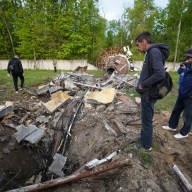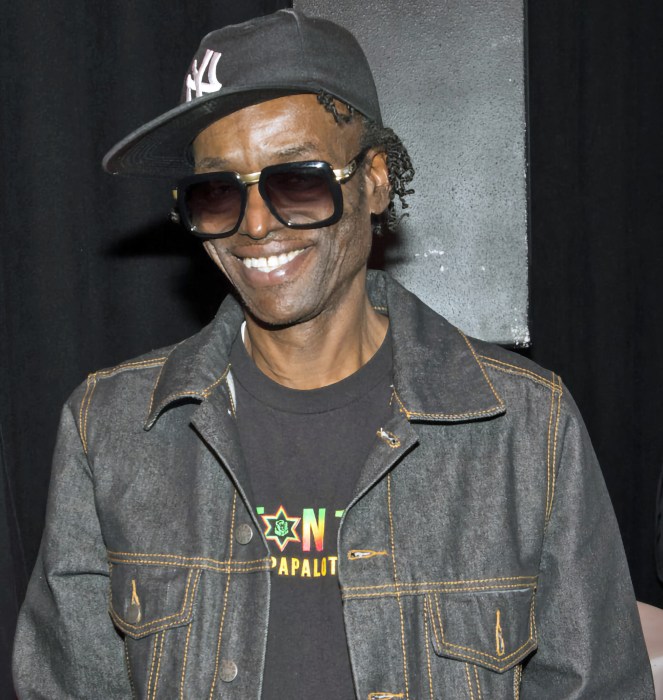 Patrick Daniels, Karlyn Michelson and Robert Berger directed the film of the play “Charlie Victor Romeo.”
Patrick Daniels, Karlyn Michelson and Robert Berger directed the film of the play “Charlie Victor Romeo.”
Credit: Getty Images
“I love flying,” says Robert Berger. You might not guess that, considering he’s one of three creators of “Charlie Victor Romeo,” a play that, since its 1999 birth, restages — as dryly and as accurately as possible — six notable plane crashes from the 1980s and ’90s, each set in the cockpit in the final moments.
“Honestly, it was born out of a love of flying,” he claims, noting it was also a rebellion against turn-of-the-last-century reality programming. First staged in 1999, it came when TV was overrun by the likes of “Cops.” While discussing it with Irving Gregory, one of its other creators, they happened upon a book about airplane crashes that featured transcripts from certain tragedies.
They started staging their recreations with their New York theater troupe Collective:Unconcious, and have continued ever since, both on traditional stages and for training purposes at the Pentagon. Now it’s a very unlikely movie, co-directed by Berger, and one that doesn’t alter it much: It still takes place on a deliberately artificial stage, and was even shot during three live performances. (A handful of pick-up shots were done for close-ups and other bits where the camera would have been intrusive to the performances.)
But the stage setting isn’t the film’s most noticeable visual aspect. That would be the use of stereoscopics. “Traditionally, 3-D is a special effect — a rocket flying at the screen,” says co-creator, co-director and co-star Patrick Daniels. “We wanted to use it to increase the intimacy between our performers and the audience.”
“The only thing that’s missing from the theater experience is we’re not in the same room together,” Berger points out, then notes that if anything it makes it more intimate (or faux-intimate). “This 3-D technology actually brings you in some ways closer to the action than if you were in a live theater experience.”
“With a film we get to make sure that every moment we want the audience to see gets seen,” Daniels says. “As theater, there’s a lot of small things that are going on that, if you’re sitting in the back row of an 800-seat theater, you’re not going to notice. We can really bring those up front.”
There’s also the filming-for-posterity aspect. “The company has been in deep preparation for this for 15 years,” Daniels says. While the basic structure — six episodes, separated only by raw stats about each case, including flight number and how many survived (or didn’t) — hasn’t changed, they say it’s been updated only to increase accuracy. When the play was staged in a Japanese-language version in 2002, they greatly expanded a sequence involving an American flight around Tokyo.
The idea of turning reality into art inevitably raises concerns about intent and taste, especially for those related to the departed. One thing they did was try to keep it as by-the-books as possible, and to not editorialize.
“It was important for us to work specifically from those transcripts,” Daniels explains. “We made a conscious effort not to listen as performers to the recordings. We didn’t want to get any ideas of how people sounded or talked.” They researched how to accurately portray pilots and other members of the crew, but they didn’t want to assume characteristics of the people involved. “We play each pilot as an everyman. Even people who are not pilots with no knowledge of aviation can make a connection because of that effort.”
At the same time they had an amount of wiggle room when it came to structuring the delivery of each transcripted line. “We tried to massage the way it all fit together and make it so it becomes poetry or music,” says Daniels. “It was important to make it a symphony or a piece of music as well as everything else.”
As far as how it’s processed by audiences, “Charlie Victor Romeo” isn’t meant to be a mere “therapy piece for people who are afraid of flying,” says Daniels. But it still has calming means, especially for them after living 15 years with the material. “The result of your experience as an audience is you gain knowledge,” Daniels explains. “Knowledge becomes power and power enables you to get on an airplane with a certain relaxed altertness. I’ve always enjoyed flying, but I’m more comfortable sitting down knowing more about what’s going on.”
Follow Matt Prigge on Twiter@mattprigge
















